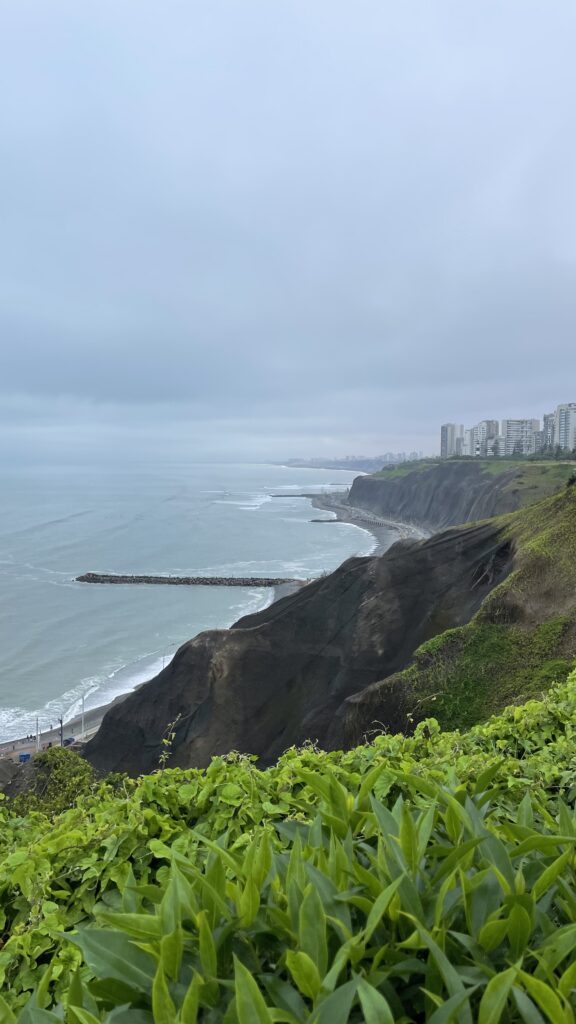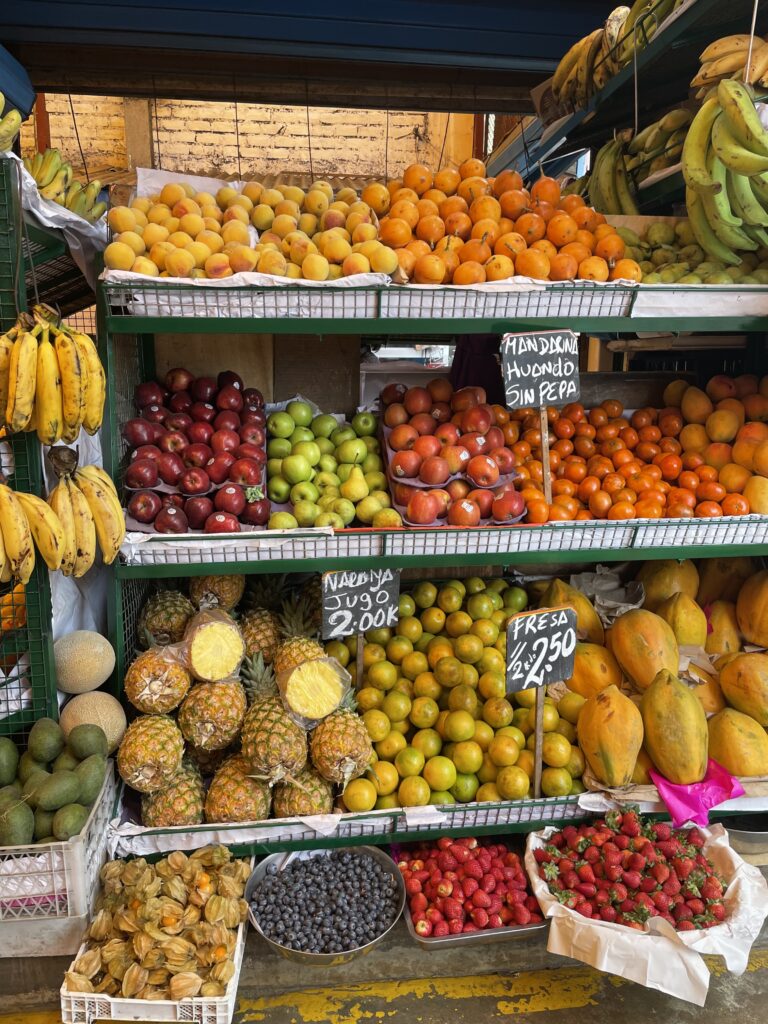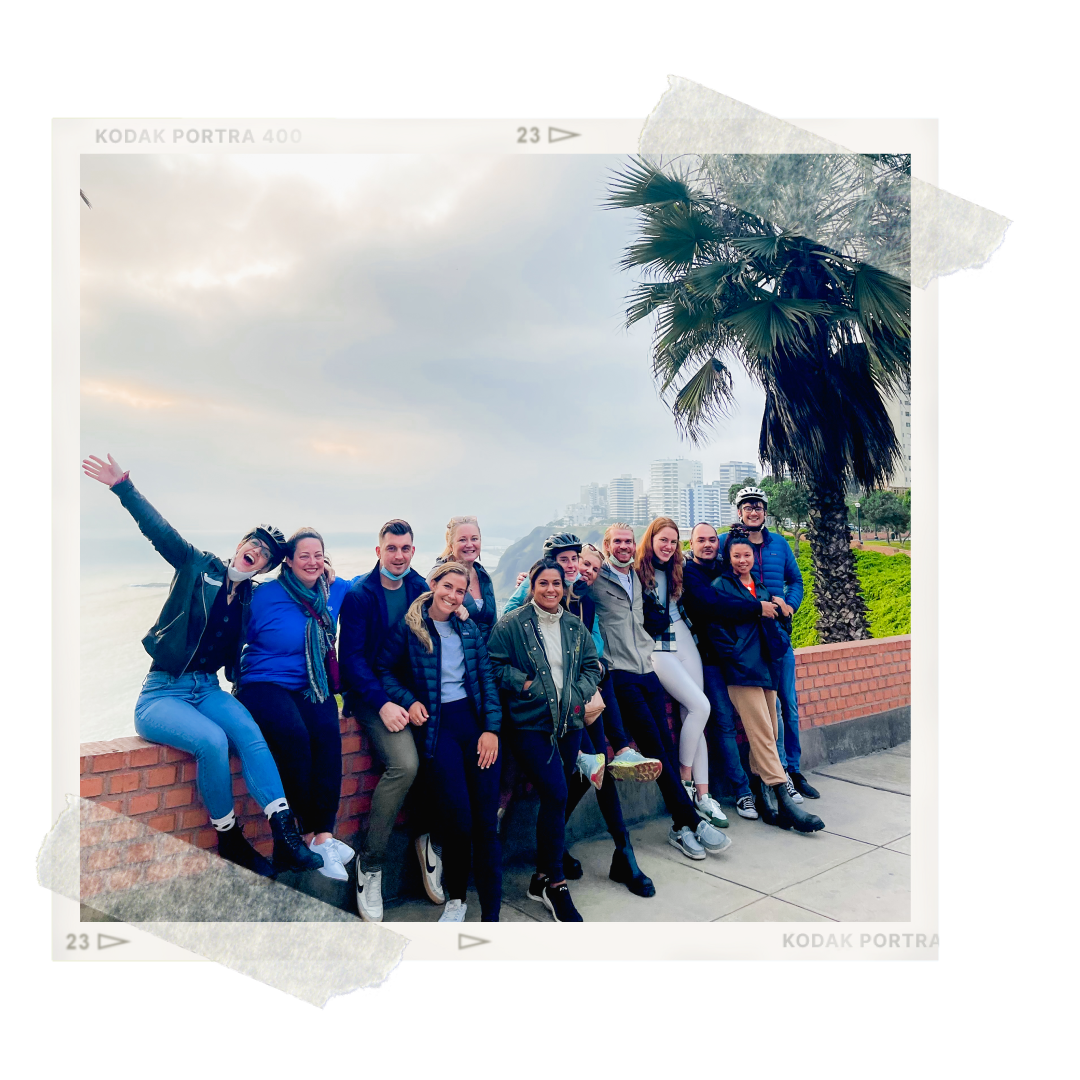when I’ve been: The entire month of september 2021
Lima was the last stop of our 4 month Remote Year adventure, and I’m not going to lie, our expectations were low. We were heading there for the month of September 2021, which is winter below the equator, and Lima is known for being exceptionally gloomy that time of year. And that much was true–when we were in Lima, we didn’t see the sun once. But the city (and Peru as a whole) blew us away. Lima is the perfect place to use as a home base while exploring the rest of the country. And hey, I hear it’s quite nice there during their summertime!
where to stay
Miraflores is the district you’ll most likely want to stay in. It’s got everything you need, is safe, and depending on where you stay you’ll be walking distance to the ocean. We stayed in the Selina apartments, which I found to be very convenient. They were even equipped with full kitchens, and in the same building as the coworking space that we used for the month.
top 3 things to do
Cooking class
Can’t leave Lima without learning how to cook some of their drool-worthy traditional dishes, like ceviche and lomo saltado. Our group arranged a cooking class for us that isn’t available online, however here’s one that looks similar!
Swim with the sea lions
I’ll never forget this tour, for starters because it was a blast, but also because it was the day of my flight back to NYC after 4 months of travel, and it was the final thing that I just had to check off my list before leaving Lima. I’ll let you experience it for yourselves, but be prepared to experience the joy of hundreds (maybe thousands) of friendly, excited sea lions basically screaming at you in the middle of the ocean. Pack extra layers and towels… you’ll be cold on the right back after getting into the icy cold water. If you get sea sickness, maybe take a dramamine.
Barranco Food & Art Tour
This tour was such a fun way to see the colorful neighborhood of Barranco and learn more about traditional Peruvian food. Our guide was so engaging and fun.
trips from lima
- Huacachina
- Cusco (Machu Picchu, Rainbow Mountain)
what to eat
Bodegon → A good, no frills spot for delicious traditional food. We loved the soups, empanadas, and causa.
Jeronimo → This was our absolute favorite spot, and we found ourselves back there multiple times. We probably tried almost everything on the menu, but some of the fan favorites were the truffle gnocchi, shrimp tacos, short rib, and cheesecake.
Sutorīto Māketto → Delicious sushi place, owned by a friend of one of our tour guides. I was bummed that I never got to go to the restaurant in person, but we ordered delivery (on Rappi) several times and it was always top knotch.
Ché Chá → My favorite café with good food options for any meal, although I most frequently went for breakfast. I loved their egg sandwich and the ceviche.
Maido → This tasting menu knocked my socks off, and I’m still thinking about it to this day. We did it with the wine pairings and while it was about $200 USD, if you’re a foodie and love Japanese food, it’ll be worth every penny.
Central → This is the “must visit” restaurant and tasting menu to experience in Lima. Here’s what I’ll say about it… it didn’t blow me away. The concept and overall experience was really cool, but I wasn’t crazy about the food, and it didn’t feel worth my $250 USD. However I can’t not put it on this list… so I’ll let you decide for yourself whether to check it out.
things to know
Seasons → You’re in the southern hemisphere, so remember the seasons are swapped! Winter there is roughly from May to November, although it’s pretty mild–in the 50s and sometimes 60s–but very grey and cloudy.
Don’t drink the water → It’ll make you ill. Unfortunately, water filters aren’t really a thing there either, so the only option is to buy plastic water bottles. I recommend grabbing a large jug from a grocery store and refilling your reusable bottle to save money and plastic.
Tipping → 10% is standard if the service is good. You’ll have to tell them to add it before they swipe your card, or you can leave cash.
Ubers → Are easy to get and affordable.
Safety → Lima is known to be one of the safest cities in South America. Even at night we always felt safe, although obviously use common sense.
The Spanish → Apparently the further south you go, the harder the dialect is to understand for non-native speakers. They speak fast and many words are different from what we’ve been taught, so just ask people to speak slowly. (For example, the word for avocado is palta instead of aguacate).




